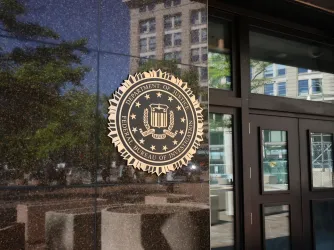Table of Contents
Special Issue: New and forthcoming books, scholarly articles — FAN 351

Previous issues of First Amendment News have profiled new and forthcoming books (e.g., here, here, and here). Similarly, over at FIRE’s “So to Speak” podcast, interviews with various authors have highlighted new books related to freedom of expression (e.g., here, here, and here). With this post, we continue that tradition and list of new and forthcoming scholarly articles related to freedom of expression. Before turning to all of that, however, first a few words about a new and important report by Jonathan Friedman and Nadine Farid Johnson released by PEN America on book banning.

Here are a few facts and figures from the recently released PEN America report:
- From July 2021 to June 2022, PEN America’s Index of School Book Bans lists 2,532 instances of individual books being banned, affecting 1,648 unique book titles.
- The 1,648 titles are by 1,261 different authors, 290 illustrators, and 18 translators, impacting the literary, scholarly, and creative work of 1,553 people altogether.
- Bans occurred in 138 school districts in 32 states. These districts represent 5,049 schools with a combined enrollment of nearly 4 million students.
The numbers in this report represent documented cases of book bans reported directly to PEN America and/or covered in the media; there are likely additional bans that have not been reported.
- Among the 1,648 unique titles in the report’s index:
- 674 titles (41 percent) explicitly address LGBTQ themes or have protagonists or prominent secondary characters who are LGBTQ (this includes a specific subset of titles for transgender characters or stories—145 titles, or 9 percent);
- 659 titles (40 percent) contain protagonists or prominent secondary characters of color;
- 338 titles (21 percent) directly address issues of race and racism;
- 357 titles (22 percent) contain sexual content of varying kinds, including novels with some level of description of sexual experiences of teenagers, stories about teen pregnancy, sexual assault and abortion as well as informational books about puberty, sex, or relationships;
- 161 titles (10 percent) have themes related to rights and activism;
- 141 titles (9 percent) are either biography, autobiography, or memoir; and
- 64 titles (4 percent) include characters and stories that reflect religious minorities, such as Jewish, Muslim and other faith traditions.
- PEN America estimates that at least 40 percent of bans listed in the Index (1,109 bans) are connected to either proposed or enacted legislation, or to political pressure exerted by state officials or elected lawmakers to restrict the teaching or presence of certain books or concepts.
- PEN America has identified at least 50 groups involved in pushing for book bans across the country operating at the national, state or local levels. Of those 50 groups, eight have local or regional chapters that, between them, number at least 300 in total; some of these operate predominantly through social media.
Related
- Erin Blakemore, “The history of book bans—and their changing targets—in the U.S.,” National Geographic (Sept. 6, 2022)
Book banning is once again in the headlines. Earlier this year, Utah approved a state law suppressing “sensitive material” in classrooms. Meanwhile, a group of Georgia moms have gotten attention for attending school board meetings and reading passages out loud from books they find objectionable, such as Jonathan Safran Foer’s "Extremely Loud & Incredibly Close," claiming they are “pornographic materials.” (Did Ovid's erotic poetry lead to his exile from Rome?)
- Emma Stein, “Book bans spreading across Michigan: What's driving them,” Detroit Free Press (Oct. 11, 2022)
10 forthcoming books
- Jerome Barron & C. Dienes, “First Amendment Law in a Nutshell” (West Academic Publishing; 6th ed., Oct. 27, 2022).
- Bradford Vivian, “Campus Misinformation: The Real Threat to Free Speech in American Higher Education” (Oxford University Press, Dec. 6, 2022)
- Sigal R. Ben-Porath, “Cancel Wars: How Universities Can Foster Free Speech, Promote Inclusion and Renew Democracy” (University of Chicago Press, Jan. 16, 2023)
- Kathryn Schumaker, “Troublemakers: Students’ Rights and Racial Justice in the Long 1960” ( NYU Press, Jan. 9, 2023)
- Dennis Baron, “You Can't Always Say What You Want: The Paradox of Free Speech” (Cambridge University Press, Feb. 28, 2023)
- Judy Gold, “Yes, I Can Say That: When They Come for the Comedians, We Are All in Trouble” (paperback ed., Dey Street Books, April 15, 2023)
- Jordi Pujol, “The Collapse of Freedom of Expression: Reconstructing the Ancient Roots of Modern Liberty” (University of Notre Dame Press, Feb. 15, 2023)
- Glen Burgess, “George Orwell's Perverse Humanity: Socialism and Free Speech” (Bloomsbury Academic, May 4, 2023)
- Kelsy Burke, “The Pornography Wars: The Past, Present, and Future of America’s Obscene Obsession” (Bloomsbury Publishing, Jan. 24, 2023)
- Ronald Collins & David Skover, “The Death of Discourse” (3rd ed, Carolina Academic Press, Nov. 22, 2022)
10 new books
- Jacob Mchangama, “Free Speech: A History from Socrates to Social Media” (Basic Books, 2022)
- Ralph Engleman & Carey Shenkman, “A Century of Repression: The Espionage Act and Freedom of the Press” (University of Illinois Press; paperback ed, 2022)
- Len Niehoff, “Free Speech: From Core Values to Current Debates" (Cambridge University Press, new ed., 2022)
- Andrew Doyle, “Free Speech And Why It Matters: Why It Matters” (Constable, 2022)
- David Mamet, “Recessional: The Death of Free Speech and the Cost of a Free Lunch” (Broadside Books, 2022)
- Zac Gershberg & Sean Illing, “The Paradox of Democracy: Free Speech, Open Media, and Perilous Persuasion” (University of Chicago Press, 2022)
- Jay D. Adkisson (author) & Carl A. Berthold Jr. (ed.), “Anti-SLAPP Law Modernized: The Uniform Public Expression Protection Act” (BookBaby, May 17, 2022)
- Sheldon Whitehouse & Jennifer Mueller, “The Scheme: How the Right Wing Used Dark Money to Capture the Supreme Court” (The New Press, 2022)
- Richard L. Hasen, “Cheap Speech: How Disinformation Poisons Our Politics―and How to Cure It” (Yale University Press, 2022)
- Margaret A. Nash & Karen L. Graves, “Mad River, Marjorie Rowland, and the Quest for LGBTQ Teachers’ Rights” (Rutgers University Press, 2022)
3 forthcoming articles
- Jason Schultz, “The Right of Publicity: A New Framework for Regulating Facial Recognition,” Brooklyn Law Review (2023)
- Michael Kagan, “Regulatory Constitutional Law: Protecting Immigrant Free Speech without Relying on the First Amendment,” Georgia Law Review (2023)
- Vanessa Miller, Frank Fernandez & Neal H. Hutchins, “The Race to Ban Race: Legal and Critical Arguments Against State Legislation to Ban Critical Race Theory in Higher Education,” Missouri Law Review (2023)
16 new articles
- Richard L. Hasen, “Donald Trump Should Remain Deplatformed from Facebook, Twitter, and YouTube Despite the High Bar That Platforms Should Apply to the Question of Deplatforming Political Figures,” SSRN (Oct. 7)
- Tyler Valeska, “Abortion Speech Suppression,” SSRN (July 28)
- Tyler Valeska, “First Amendment Limitations on Public Disclosure of Protest Surveillance," Columbia Law Review Forum (2022)
- Clay Calvert, “First Amendment Battles over-Anti-Deplatforming Statutes: Examining Miami Herald Publishing Co. v. Tornillo's Relevance for Today's Online Social Media Platform Cases,” New York University Law Review (2022)
- Jordan Wallace-Wolf, “Nobody’s Business: A Novel Theory of the Anonymous First Amendment,” Hastings Constitutional Law Quarterly (2022)
- John Fabian Witt, “Weaponized from the Beginning,” SSRN (Sept. 2)
- Kristin A. Olbertson, “Speech, Law, & Power in the American Revolution," Legal History Blog (July 6)
- Eugene Volokh, “UNC Chapel Hill Student Gov't President Cuts Off Funding & Contracting to Anyone Who ‘Advocates’ for Limits on Abortion,” The Volokh Conspiracy (July 28)
- Elaine Margolin, “Moments of Grace: On Azar Nafisi’s 'Read Dangerously: The Subversive Power of Literature in Troubled Times',” LA Review of Books (April 6)
- Stuart Brotman, “Free Speech, Free Press, Play Ball!," Inside Sources (March 31)
- Note, “Reporters Committee for Freedom of the Press v. FBI,” Harvard Law Review (2022)
- George R. La Noue, “Time to Challenge Compelled Speech?,” Law & Liberty (March 29)
- Sherry Co, “Masterpiece Cakeshop Redux and the Homophobia Exemption from Anti-Discrimination Law,” Verdict (March 9)
- Adam Candeub, “Editorial Decision-Making and the First Amendment,” SSRN (Sept. 1)
- Mary Ann Franks, “Reforming Section 230 and Platform Liability,” SSRN (Oct. 10)
- Genevieve Lakier, “A Counter-History of First Amendment Neutrality,” Yale Law Forum (2022)
Recent conference
- “Election Speech and the First Amendment Symposium,” First Amendment Law Review (Jan. 21) (Participants: Mary-Rose Papandrea, Helen Norton, Martin Redishm Clay Calvert, Evan Ringel, William Marshall, Eric Muller, Richard Hasen, Ciara Torres-Spelliscy, Leslie Kendrick, David Ardia, Jasmine McNealy, Brenda Reddix-Smalls, Robert Yablon, & Neema Guliani)
Tribute to Tony Mauro
Terry Carter, “Pathbreaking Journalist, Remarkable Human Being, ‘Jeopardy’ Clue: ‘Who is Tony Mauro?’," The Texas Lawbook (Oct. 3)
Lawyers prepare for U.S. Supreme Court arguments with research, more research and numerous moot court go-rounds. And they study the justices themselves, looking for clues to succeed. Which ones are more likely to interrupt their arguments and in what ways? Which ones have habits, histories or inclinations that might inform an effort to persuade them?
For decades, plenty of those nuggets have come from Tony Mauro, a journalist who became a clue himself on the TV show “Jeopardy” in April 2009. (A long-time reporter for USA Today and then the National Law Journal and the rest of ALM Media, Mauro is semi-retired and joined Texas Lawbook in 2020 as a regular contributor.)
The Jeopardy-ized answer (“phrased in the form of a question”): What is a court reporter? In reality, that is the barest minimum description for someone who has become a big name in legal affairs journalism without even trying to be. A lot of reporters have covered the court; and then there’s Mauro, the pathbreaker.
“Tony changed the nature of Supreme Court coverage, which traditionally has been focused on the public actions of the court,” says Adam Liptak, who began covering the court for The New York Times in 2008. “He broadened the lens to look at the culture of the court, the advocates, clerks, the justices in public appearances, their [clerk] hiring patterns and their commitment, or not, to transparency. I view him as an important and seminal figure in modern Supreme Court reporting.”
Mauro realized early on that almost any tidbit having to do with the Supreme Court — no matter how subtle — is worth a story.
“Appetite for information about the Supreme Court is so huge,” says Liptak, “there almost is no such thing as a small story. Tony has an excellent eye for minor or telling developments or historical incidents that illuminate contemporary practice.”
Upon meeting Mauro, Liptak told him, “I want to write stories like you do.”
FIRE’s cable TV free speech ad campaign (MSNBC & CNN)
YouTube: Comedian Tracy Morgan on attacks on free speech
- “Tracy Morgan Supports Free Speech In Comedy,” The Kelly Clarkson Show (Sept. 14, 2022) (see 4:35 minutes into interview) (Morgan: “("I think there's an attack on free speech.")
YouTube: Oral arguments in campaign-finance enforcement action
- Institute for Free Speech v. Fred Jarrett (arguments before Ninth Circuit panel: Oct. 7) (“An appeal from the district court's summary judgment for defendants and dismissal for lack of standing of an action brought by the Institute for Free Speech, which wishes to represent tax-activist Tim Eyman pro bono in a state court appeal of a campaign-finance enforcement action.”).
More in the news
- Lizzie O'Leary, “A Supreme Court Case Could Decide the Fate of the Modern Internet,” Slate (Oct. 10)
- Jonathan Turley, “Buy, Elon, buy: Musk's renewed interest in Twitter could be a win for free speech,” USA Today (Oct. 10)
- Anelise Powers, “New systemwide harassment policy puts all Minnesota State universities in the red,” FIRE (Oct. 7)
- Sarah K. Burris, “Marjorie Taylor Greene uses her First Amendment rights to claim the First Amendment is dead,” Raw Story (Oct. 9)
- Susanna Granieri, “NRA Free Speech Lawsuit Dismissed Against NY State Financial Regulator," First Amendment Watch (Oct. 4)
- Francie Diep, “It’s Not Clear Whether Public-College Professors Have First Amendment Rights When They’re Teaching,” Chronicle of Higher Education (Sept. 26)
2022-2023 SCOTUS term: Free expression & related cases
Review granted
Pending petitions
- Moody v. NetChoice, LLC
- Counterman v. Colorado
- United States v. Hansen
- Klein v. Oregon Bureau of Labor and Industries
- Jack Daniel’s Properties, Inc. v. VIP Products LLC
Qualified Immunity
Liability under Anti-Terrorism Act
Section 230 Immunity
- Gonzalez v. Google (review granted)
Review Denied
- My Pillow v. U.S. Dominion (news story)
- Kowall v. Benson
- Tofsrud v. Spokane Police Department
- Swanson v. Griffin County
Last FAN
FAN 350: “Cert. petition: Facebook jokester, parody, free speech, and qualified immunity”
Recent Articles
Get the latest free speech news and analysis from FIRE.

VICTORY: Court vindicates professor investigated for parodying university’s ‘land acknowledgment’ on syllabus

Can the government ban controversial public holiday displays?

DOJ plan to target ‘domestic terrorists’ risks chilling speech


